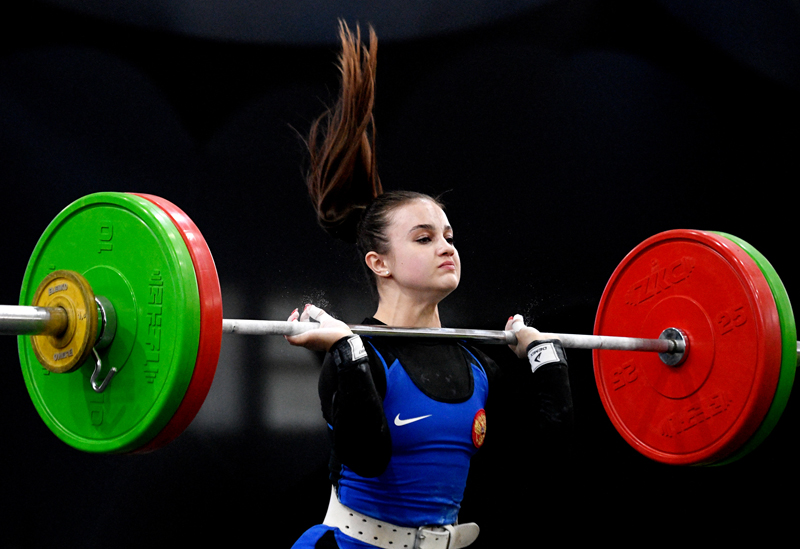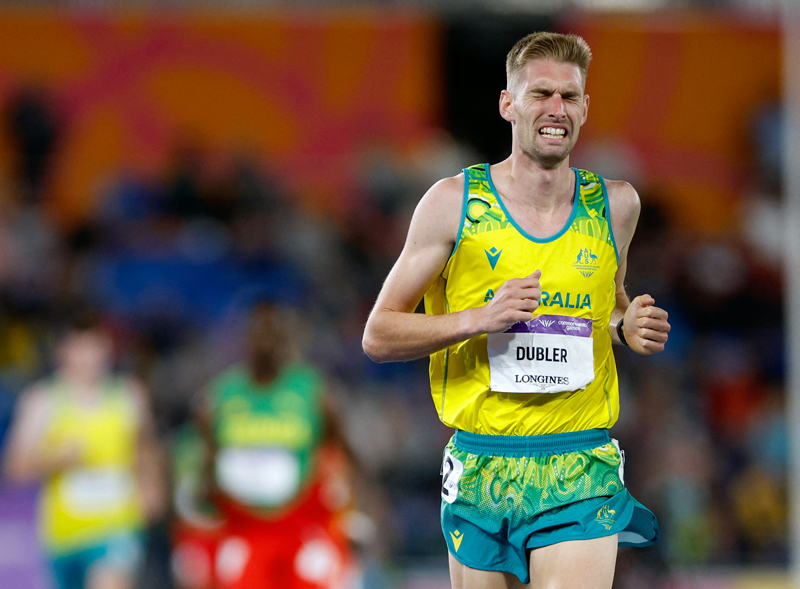You are viewing 1 of your 1 free articles. For unlimited access take a risk-free trial
Strength or endurance- which comes first in a mixed session?
Andrew Sheaff looks at new research on how athletes requiring both strength and endurance should structure a training session containing both
There are very few athletes who train exclusively in the realms of strength or endurance. Almost all athletes will need some combination of the two, even if one element is included in very small amounts throughout the training process.
Concurrent training
Performing both strength and endurance training in one session is known as concurrent training. Unfortunately, performing strength training and endurance training at the same time may negatively interfere with one another. This is known as the ‘concurrent training effect’. Intuitively, this makes sense; one style of training is pushing the body to create as much force and use as much energy as possible in as little time as possible, while the other style of training is pushing the body to use force and create energy as efficiently as possible for as long as possible. By performing both at the same time, you’re effectively asking the body to meet opposite demands.
This reality has been appreciated since athletes first began ‘training’, and it has led to various strategies aimed at minimizing the concurrent training effect. These include changing the timing, intensity, volume, and mode of training. It has been studied scientifically in various forms for over 40 years, with these parameters being the focus. Initially, studies examined the impact of endurance and strength training performed on separate days. This research demonstrated that including both types of training did result in some compromise, even when performed on separate days. However, the effects were not consistent or always present. It appeared that there was some nuance to the situation.
Time limitations
To make the challenge of implementing concurrent training even more difficult, almost all athletes are limited in time. Many don’t have time to perform training every day, let alone perform multiple training sessions per day. As a result, many athletes are not performing concurrent training on a separate day or daily basis, but within a single training session! While the research on alternating day concurrent training provides valuable insight, it doesn’t provide concrete guidance for those individuals that are required to perform strength and endurance training on the same day.
In recent years, researchers have begun to investigate the impact of the sequence of strength and endurance carried on the same day. As with performing concurrent training on separate days, the results have been somewhat inconsistent, depending on the specific protocols, the subjects, and the design of the study. To provide some clarity about the impact of concurrent training sequence on strength and endurance adaptations, a new study by Chinese researchers has analyzed all the relevant data to provide insights as to how athletes and coaches can best navigate this problem(1).
The research
To help identify the impact of exercise sequence during concurrent training on performance adaptations, this study analyzed all the previous studies (known as a meta-analysis) comparing strength-endurance and endurance-strength sequences. The researchers scoured research databases for studies that met the criteria, and ultimately included 19 studies involving 482 subjects. The specific training outcomes they were looking at were aerobic capacity (VO2max), maximum knee extension (quadriceps) strength, maximum knee flexion (hamstring) strength, and lower limb power. Further, they examined how different factors influenced the results, such as age, gender, and length of the training period.
The findings
From an endurance perspective, there was absolutely no effect of the strength-endurance/endurance-strength training sequence on VO2max. It appears that regardless of the training sequence, similar improvements are produced. For those primarily interested in adaptations in aerobic capacity therefore, athletes can perform endurance training prior to strength training, or strength training prior to endurance training, without any negative impact on performance. This was true in all cases, regardless of any other factors that were studied.
In contrast, exercise sequence DID play a role in determining the degree of strength and power adaptations that were produced. Overall, performing strength training prior to endurance training had a favorable effect on improvements in strength, compared to performing endurance work prior to strength work.
However, some of the investigated variables had a greater impact on the outcomes. First, the impact of exercise sequence was magnified in older individuals, indicating it becomes more important to perform strength work first in this population. This was also true for women – ie strength before endurance training is preferable. Additionally, when the training period was longer than eight weeks, the impact of exercise sequence was even more evident (although an effect was still present for training periods shorter than eight weeks). This is particularly relevant because most athletes are training for extended periods of time or indeed continually.
Practical applications for athletes
If you’re like most athletes, you’ll be performing concurrent training in some form at some time during the training year. As such, it’s important to understand the impact of how you sequence your training on a daily basis. Fortunately for those focused on improvements in aerobic capacity, it does not appear to matter which training sequence you use. Either will get the job done, and it becomes a matter of personal preference or convenience.
If your goal is to improve your strength performance, you should play particular attention if any of the following factors come into play. If you are older (40+) or are female, performing strength work first becomes more important. Likewise, if you plan on strength training for a period in excess of eight weeks, and your focus is on strength rather than power, be sure to place your strength work before your endurance work. This is not to say that younger and male athletes can ignore these suggestions, just that the impact is larger for older and female athletes specific situations.
Reference
1. Front Physiol. 2023 Jan 26;14:1072679. doi: 10.3389/fphys.2023.1072679. eCollection 2023
Newsletter Sign Up
Testimonials
Dr. Alexandra Fandetti-Robin, Back & Body Chiropractic
Elspeth Cowell MSCh DpodM SRCh HCPC reg
William Hunter, Nuffield Health
Newsletter Sign Up
Coaches Testimonials
Dr. Alexandra Fandetti-Robin, Back & Body Chiropractic
Elspeth Cowell MSCh DpodM SRCh HCPC reg
William Hunter, Nuffield Health
Keep up with latest sports science research and apply it to maximize performance
Today you have the chance to join a group of athletes, and sports coaches/trainers who all have something special in common...
They use the latest research to improve performance for themselves and their clients - both athletes and sports teams - with help from global specialists in the fields of sports science, sports medicine and sports psychology.
They do this by reading Sports Performance Bulletin, an easy-to-digest but serious-minded journal dedicated to high performance sports. SPB offers a wealth of information and insight into the latest research, in an easily-accessible and understood format, along with a wealth of practical recommendations.
*includes 3 coaching manuals
Get Inspired
All the latest techniques and approaches
Sports Performance Bulletin helps dedicated endurance athletes improve their performance. Sense-checking the latest sports science research, and sourcing evidence and case studies to support findings, Sports Performance Bulletin turns proven insights into easily digestible practical advice. Supporting athletes, coaches and professionals who wish to ensure their guidance and programmes are kept right up to date and based on credible science.











